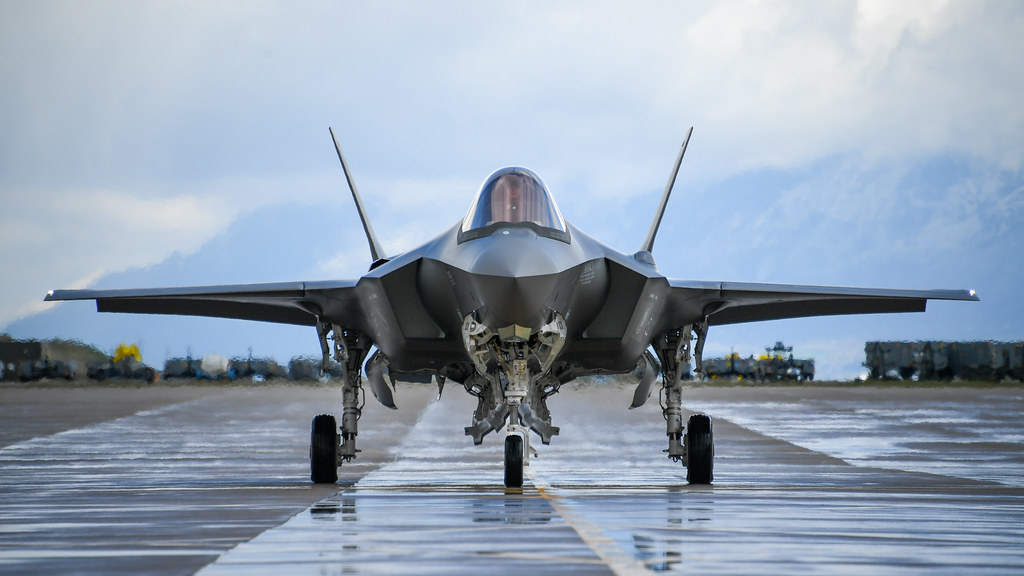
Russia’s future defense in the post-war era faces a significant test as it grapples with a noteworthy challenge: the potential inclusion of Finland as a full member of NATO. This development, which occurred on April 4th, has set in motion a series of negotiations. Reliable sources indicate that Washington aims to establish substantial military infrastructure in the Scandinavian nation. While the accuracy of this information remains uncertain, it is evident that the first obstacle Russia must confront is the presence of F-35 aircraft in close proximity to its border.
The distance between the nearest Finnish border point and Russia’s second-largest city, Saint Petersburg, amounts to 124 miles (200 km). This holds immense strategic significance for Russia, particularly concerning its naval offensive capabilities, as Saint Petersburg serves as the central command and headquarters of the Russian Navy.
According to military analysts, Washington intends to deploy a greater number of F-35 fighters in Finland than originally planned. At present, Finland has placed an order for 64 Lockheed F-35A Block 4 fighters, which will be incorporated into the inventory of the Finnish Air Force (FAF or FiAF). These F-35s are slated to replace Finland’s aging fleet of Boeing F/A-18 Hornet multirole fighters. Consequently, the Russian border with Finland will likely experience regular surveillance by F-35 aircraft in the coming years.
The United States, as indicated by various experts, expresses a desire for increased involvement in Finland. Through potential joint military infrastructure initiatives and financial support from Washington, the Pentagon aims to deploy American forces and equipment to Finland. Given its strategic geographic proximity to Russia, Finland could potentially host US B61 nuclear bombs, similar to Belgium, Germany, Italy, the Netherlands, and Turkey.
The final decision rests with Helsinki, and negotiations are expected to conclude next year, regardless of the ongoing war in Ukraine. This decision is part of a long-term strategy and post-war planning. Some opinions suggest that Helsinki is willing to grant significant autonomy to the Americans within Finnish territory, driven by Finland’s aspirations for greater interoperability with the US military.
The presence of the F-35 in Finland and its anticipated involvement in patrols or joint Finnish-US-NATO exercises will transform the existing Russia-Finland border into a heavily militarized zone. This will necessitate Moscow’s construction of a network of radars and air defense systems. Given Russia’s current capabilities, the deployment of Iskander ballistic missile systems, S-400 Triumf air defense systems, and the advanced S-500 Prometheus system are logical responses by the Russian command.
Undoubtedly, the F-35 poses a significant challenge to Russian air defenses. Designed for ground attacks and penetrating deep into hostile airspace, the F-35’s stealth capabilities will test the S-400, a system known to detect stealth fighters. Moreover, beyond Saint Petersburg, the F-35 can potentially target naval assets and air defense systems in the region, making it a critical target for Moscow.
Finland possesses four air bases within its territory, as per open data from 2018. Tampere-Pirkkala Air Base serves as the operational hub for the Finnish Air Force’s military flights and is located in southern Finland. Kuopio Air Base, situated in Central Finland, is the base of operations for a portion of the Boeing F/A-18 Hornet attack aircraft. Rovaniemi Air Base, positioned in the North, is responsible for border control with Sweden and Norway, and Hornets are also stationed there. Lastly, Jyväskylä-Tikkakoski Air Base, located in south-central Finland, primarily functions as a training facility for Finnish pilots.
Russia faces the task of ensuring its air defense not only through air defense systems and ballistic missiles but also by maintaining a robust fleet of fighters. Presently, the 2nd Air Defense Division safeguards the border with Finland using the S-400, S-300, and Pantsir-S1M systems. The 6th Air and Air Defense Forces Army is equipped with Su-27, Su-30, Su-35, and Su-57 fighters, with the base housing Su-24 bombers and MiG-31 interceptors.
The ongoing Cold War dynamic is exemplified by the future prospect of two fifth-generation stealth fighters operating along the Russian-Finnish border: the Finnish Air Force’s F-35 and the Russian Air Force’s Su-57. While the Su-57 remains limited in numbers (around 10-11 units), it boasts more combat experience than the F-35, particularly in testing beyond visual range capabilities, jamming, and electronic warfare during the conflict in Ukraine.
However, the Su-57 cannot match certain technologies integrated into the F-35 or even the Chinese J-20.
There is no doubt that the presence of the F-35 in close proximity to Russia will significantly increase the threat level. The fighter’s strategic positioning in Finland will enable extensive scanning and reconnaissance of Russian weapons systems, as perceived from the Finnish perspective. The question that remains is whether Helsinki will collaborate with Washington to facilitate the deployment of American troops and equipment in the frigid Finnish territories. This situation serves as a reminder that the notion of the Cold War being over is far from accurate.




